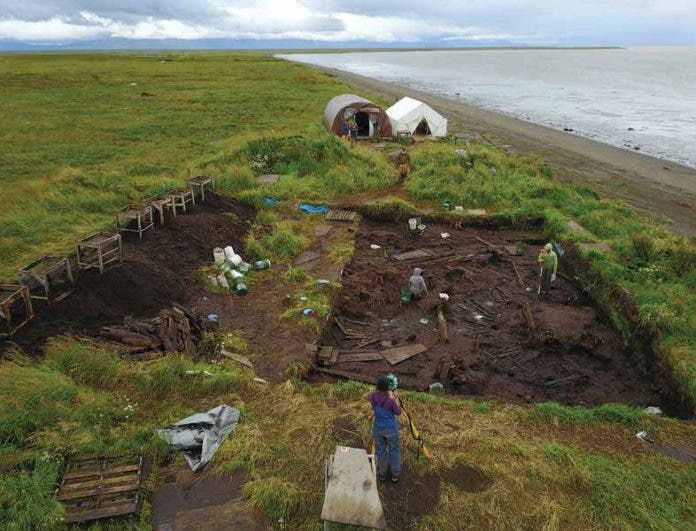The Yup’ik people in Alaska have a gruesome legend: 400 years ago, a brutal massacre took place in the city of Agaligmiut (which today is often called Nunalleq). Now, an archaeological study has not only found evidence to back this legend up — but it also suggests that the whole thing may have started from a game of darts.

Researchers have found around 60,000 well-preserved artifacts that tell what life was like at Agaligmiut before the massacre. The artifacts include dolls, figurines, wooden dance masks and grass baskets, and the good preservation is largely owed to the permafrost. Life would have been fairly prosperous given the harsh environmental conditions — but, at some point between A.D. 1590 and 1630, things took a turn for the worst.
“We found that it had been burned down and the top was riddled with arrow points,” says Rick Knecht, who along with Charlotta Hillerdal, spearheaded the study. Both are archaeology lecturers at the University of Aberdeen in Scotland.
The team found evidence of 28 people who had been tied up with grass rope and executed.
“They were face down and some of them had holes in the back of their skulls from [what] looks like a spear or an arrow,” Knecht added. The discovery of so many arrow points confirms one part of the Yup’ik legend, which called the conflict the “bow and arrow wars.”
[panel style=”panel-default” title=”A brutal legend” footer=””]When Russian fur traders began exploring southwestern Alaska in the early 1800s, they met native Yup’ik people who told horrific tales of violence and revenge. In one of these stories, two boys were playing with bone-tipped darts when one accidentally blinded the other in one eye. This prompted the father of the boy to take out both eyes of the other child, only to have his son murdered in revenge. The tit-for-tat violence escalated until it became a full blown war between two settlements, killing numerous people and wiping out entire villages. But, these legends were widely discarded as fiction, especially since they came from the Yup’ik — a population sometimes called the “peaceful Eskimo”, with little history of waging war.[/panel]
According to the legend, the conflict started when the people of Agaligmiut set up a party to raid a nearby village. The other village had prior warning of this and set up an ambush, killing the entire party with bows and arrows. They then went to the defenseless Agaligmiut, killed its inhabitants, and burned the place down. Women, children, and older people were not spared.
The archaeological finds seem to lend at least some support to this idea: the remains of the 28 executed people are all men of fighting age, and the city appears to have been burned down. However, it’s still not clear what caused the conflict in the first place, and why Agaligmiut set up a raiding party in the first place. The legend says it all started from a game of darts — another, more prosaic possibility, is that it was a squabble over resources.
Another, more prosaic possibility, is that it was a squabble over resources.
“There’s a number of different tales,” Knecht said, adding that “what we do know is that the bow and arrow wars were during a period of time [called] the little ice age, where it went from quite a bit warmer than it is now to quite a bit colder in a very short period of time.”
For now, researchers are digitizing the discovered artifacts. The team has already produced highly detailed 3D scans of several artifacts creating an education package to show how life was like at Agaligmiut before the massacre began.
Was this helpful?



